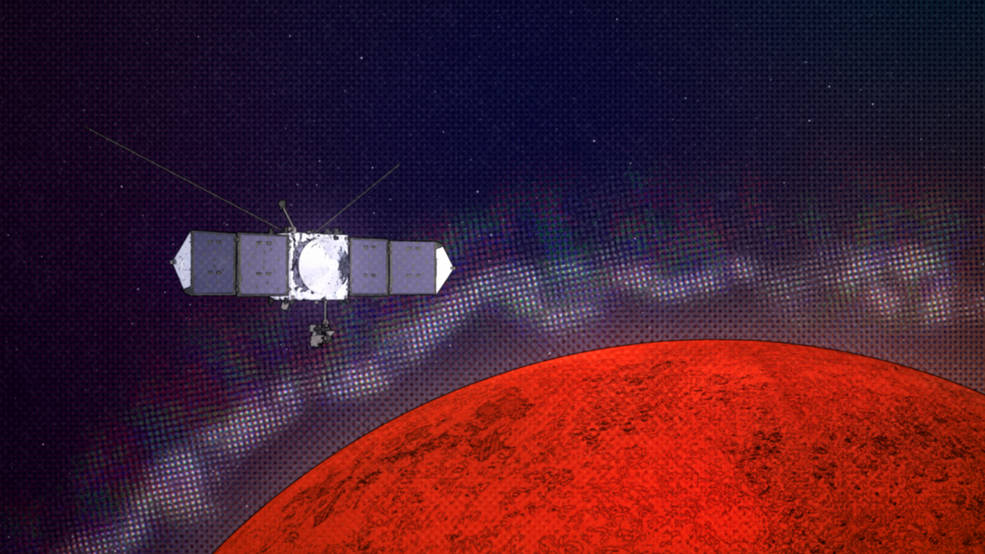How Mars Exploration Is Helping Scientists Understand Sporadic E-Layer Radio Interference on Earth

NASA's Goddard Space Flight Center has produced an informative animation that explains how the modern exploration of Mars is helping scientists understand more about the radio-frequency interfering "sporadic E-layer". These electrically-charged layers known as plasma, live high in the Earth's ionosphere, an area incredibly difficult to reach.
At Earth, the layers form at an altitude of about 60 miles (approximately 100km) where the air is too thin for an aircraft to fly, but too thick for any satellite to orbit. The only way to reach them is with a rocket, but these missions last only tens of minutes before falling back to Earth.
Luckily, the NASA's MAVEN orbiter (Mars Atmosphere and Volatile Evolution) has picked up the same type of plasma layers and rifts within the ionosphere of Mars and gathered pertinent information for the scientists back on Earth.
Related Laughing Squid PostsNASA Tests Its MARCO POLO/Mars Pathfinder System on a Simulated Martian SurfaceInternational Space Station Expedition 46 Returns Safely to Earth to Complete the First Year-Long Mission in SpaceTwitter Updates of NASA Phoenix Spacecraft Landing on MarsAt Mars, spacecraft such as MAVEN can orbit at lower altitudes and can sample these features directly. MAVEN carries several scientific instruments that measure plasmas in the atmosphere and space around Mars. "Not only had MAVEN discovered that such layers can occur at other planets than Earth, but the new results reveal that Mars offers what Earth cannot, a place where we can reliably explore these layers with satellites.
Follow Laughing Squid on Facebook, Twitter, Flipboard and Subscribe by Email.
The post How Mars Exploration Is Helping Scientists Understand Sporadic E-Layer Radio Interference on Earth first appeared on Laughing Squid.